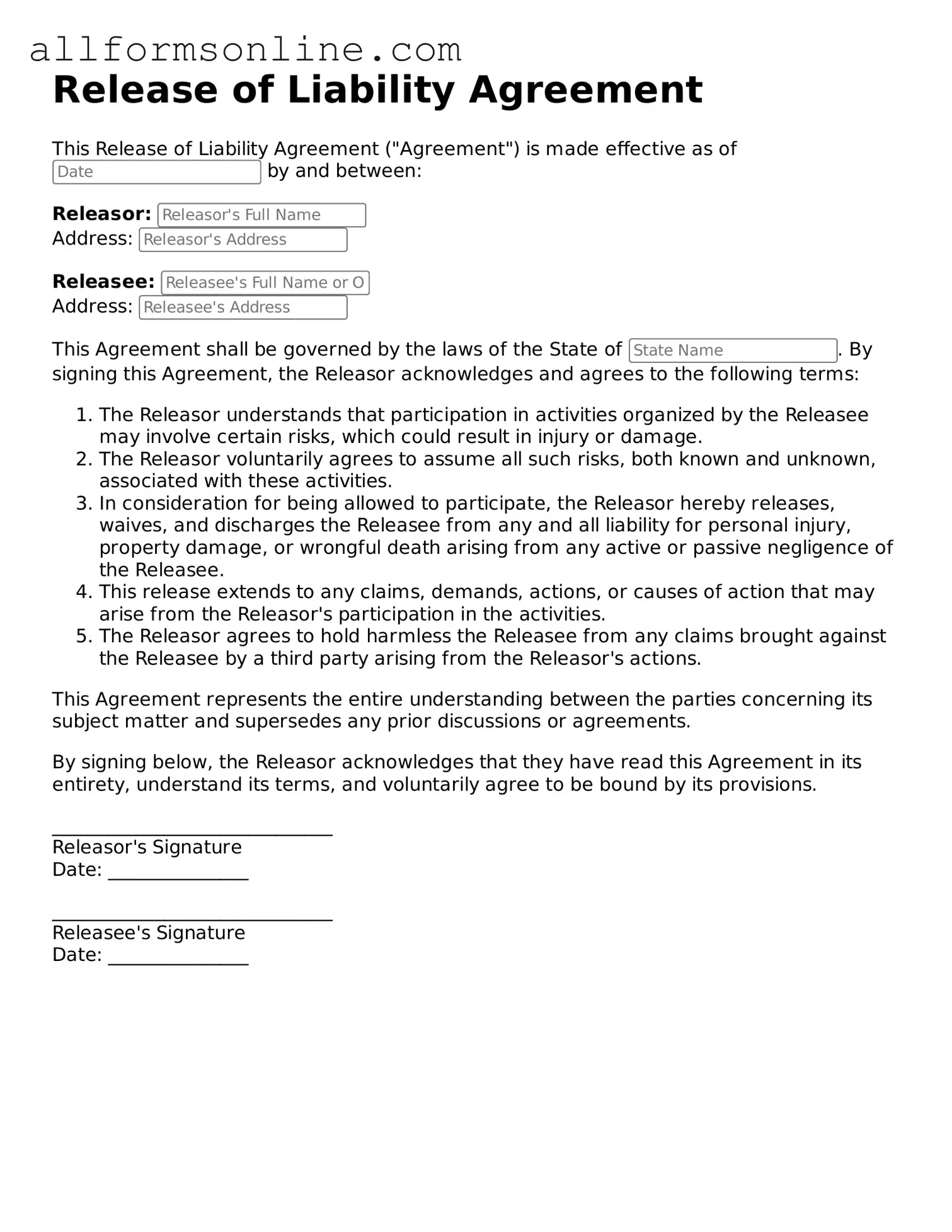What is a Release of Liability form?
A Release of Liability form is a legal document that protects one party from being held liable for any injuries or damages that may occur during a specific activity or event. By signing this form, participants acknowledge the risks involved and agree not to hold the organizer responsible for any accidents or injuries that may arise. It’s commonly used in sports, recreational activities, and events where there is a potential for risk.
Who should sign a Release of Liability form?
Anyone participating in an activity that carries a risk of injury should consider signing a Release of Liability form. This includes participants in sports, workshops, or any event where physical activity is involved. If the participant is a minor, a parent or guardian must sign on their behalf to ensure legal protection for both the minor and the organizing party.
Is a Release of Liability form legally binding?
Generally, a Release of Liability form is considered legally binding as long as it meets certain criteria. It must be clear, concise, and voluntarily signed by the participant. Additionally, the form should not contain any misleading language. Courts often uphold these agreements, but specific laws may vary by state, so it’s important to ensure compliance with local regulations.
Can a Release of Liability form be revoked after signing?
Once a Release of Liability form is signed, it typically cannot be revoked simply because a participant changes their mind. However, if there is evidence of fraud, coercion, or if the terms of the agreement are found to be unreasonable, a court may consider it void. Participants should read the document carefully and ask questions before signing to fully understand their rights and obligations.
